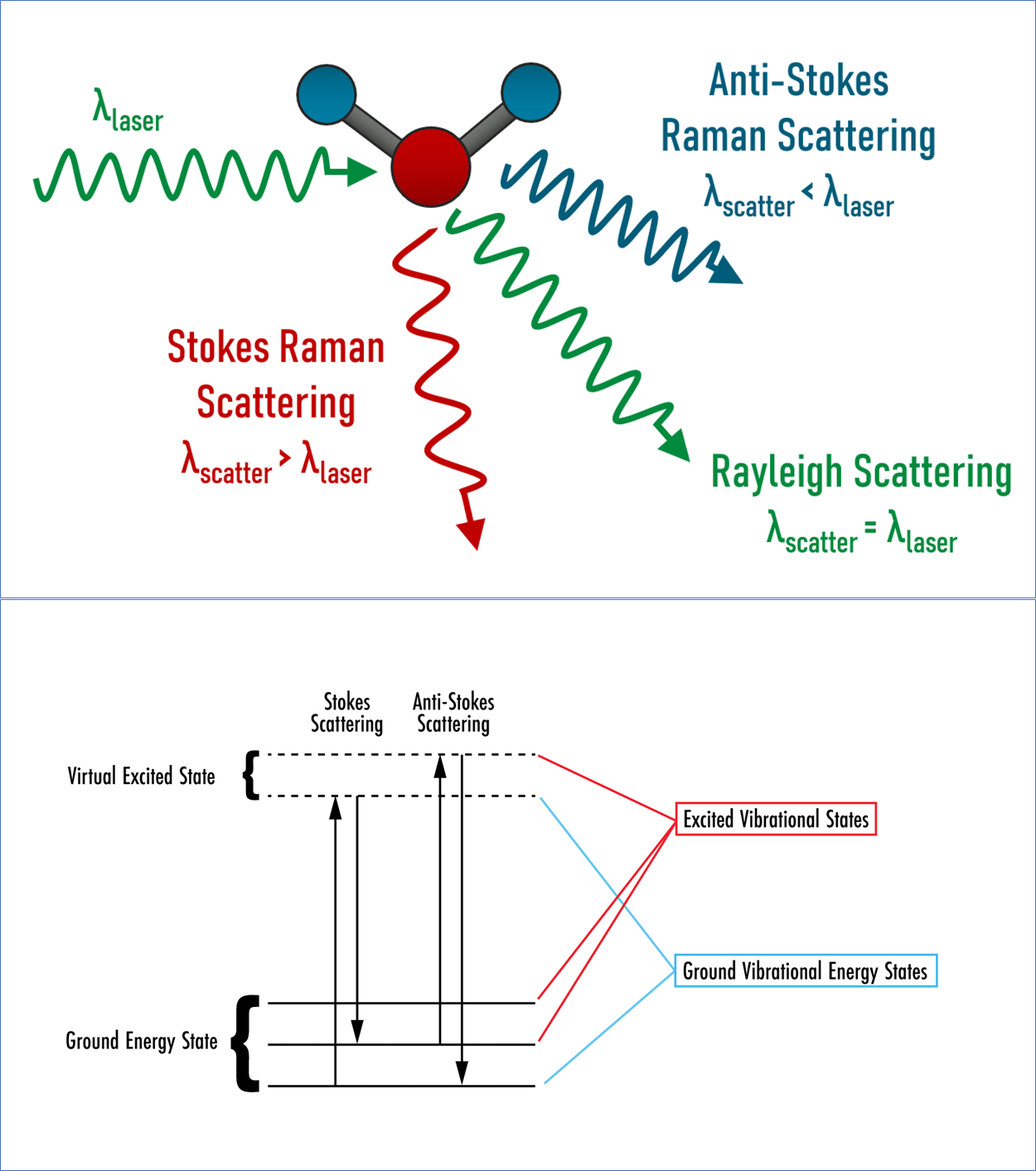AkaSci 🛰️ on Nostr: Here are two excellent diagrams that illustrate Raman scattering. When light strikes ...
Published at
2024-11-07 12:24:12Event JSON
{
"id": "f1666b77ef6d85e0e1cd9d83138721485260315c76f17bfce6a379ae027331ae",
"pubkey": "511b836d1a84274a91b54474eae42b67a54cbb0764de759ed42bffec1d4a8992",
"created_at": 1730982252,
"kind": 1,
"tags": [
[
"e",
"0619c63aad09dfb8519ce50c632af1d33f7c545ad59ff0abef0e17d3555da83d",
"wss://relay.mostr.pub",
"reply"
],
[
"proxy",
"https://fosstodon.org/users/AkaSci/statuses/113441652920730618",
"activitypub"
]
],
"content": "Here are two excellent diagrams that illustrate Raman scattering.\n\nWhen light strikes a sample material, most of it is absorbed, transmitted, or reflected. A small amount is scattered in one of 3 ways: \n1. Rayleigh - no energy is absorbed, the wavelength remains unchanged.\n2. Stokes Raman - some energy is absorbed by molecules, the wavelength of scattered light expands.\n3. Anti-Stokes Raman - molecules end up in a lower energy state, the wavelength decreases.\n\nhttps://www.edmundoptics.com/knowledge-center/application-notes/lasers/basic-principles-of-raman-scattering-and-spectroscopy/\n2/n\n\nhttps://cdn.fosstodon.org/media_attachments/files/113/441/626/717/132/875/original/8591d079094106ad.png",
"sig": "343bab8640fdc4816a8e8a2efed5d3832bf495bb9951560bb9852be9537582445620e45be53b433a56b895c4239e0b17393e6a04dfc8b1c364d4547b5501e0b9"
}
